The bigger you need to spend, the smarter you need to be.
When you’re thinking about buying, say, a $5 box of cookies or a $10 T-shirt, you’re not making a difficult decision. If you buy it and you like it, great. If you buy it and you don’t, oh well—you’re out a few bucks. If you don’t buy it, who cares?
That’s not the case with many big-ticket items.
For most people, a purchase measured in hundreds or thousands of dollars is no small transaction. What you’re buying will usually have some sort of significance—a critical service, or an essential good that’s meant to last. And typically, the more expensive it is, the more difficult it is to get out from underneath that purchase.
This makes it all the more important to make sure that you make the right decision at the onset. It also means, in many cases, you’ll want to spend more than the bare minimum on a big-ticket buy to ensure you’re getting a certain baseline of quality.
Today, I’m going to talk about a variety of big-ticket purchases that are worth splurging on. Most of these goods and services start at a high price tag, but spending a little more on them now will ensure much higher quality, more utility, and/or a longer product life, ultimately saving you time, frustration, and even money on frequently replacing a cheaper version. A few of these are things you might consider going without—but you shouldn’t, because you’ll ultimately end up paying even more in other ways.
Table of Contents
Big-Ticket Items Worth Buying

Perhaps the most important concept to keep in mind as you read through this list is that sometimes spending more money up front is a way to prevent spending even more money down the road. So while it feels like a splurge now, going big on a big-ticket item might just be a savvy financial decision in disguise.
This wisdom has limits—ultimately, your decision to spend boils down to your personal financial situation. If you need one of the below items and have a fixed amount of budget to dedicate to it, you have to do what you can with what you’ve got. Or if you simply can’t afford the item altogether, nothing we say here will change how much money you have in the bank.
But if you’re in a financial position to spend (or spend more), you’ll thank yourself later for making the most of these purchases.
1. Dental Care

Delaying needed dental treatments isn’t only uncomfortable—it can be more expensive as well. A 2023 study by the National Library of Medicine found that the top reason people delay dental care is the cost. But putting off dental care can be more expensive than fixing an issue right away.
Let’s say you have a cavity. Depending on the severity of the cavity, where you live, and the material used, filling costs vary. You should be able to get the work done for a couple hundred dollars … unless you want a ceramic or porcelain filling, which would cost around $1,100.
Now, pretend you ignore cavity pain until it’s nearly unbearable and discover you need a root canal. That procedure may cost anywhere between $600 and $1,600 without dental insurance.
In general, you’re unlikely to regret spending money on dental care. Poor oral hygiene might mean you need dentures at a young age which is expensive (a complete set of mid-priced ones usually cost between $1,000 to $3,000), not to mention extremely inconvenient.
Also, if your workplace offers dental insurance, get it—and use it. While much cheaper than health insurance, it’s still a significant purchase at several hundred dollars per year. But it can save you well more than that should you need anything more than checkups in a given year.
2. Health Insurance

Americans should never risk being without health insurance.
I get it. It sucks to pay premiums every month just so you can still pay for services until you reach your deductible … and sometimes still pay a portion after that. I’ve had years when the only time I went to a doctor was an annual wellness visit, and that certainly didn’t feel worth a year’s worth of premiums.
But you might be perfectly healthy and get in an accident that requires extensive medical care. Unfortunately, even “minor” procedures can carry big-ticket prices. And obviously, cancer and other diseases that require extensive treatment can be financially back-breaking—according to AARP, the average costs for cancer treatment are around $150,000.
So while paying health insurance premiums feels like you’re just throwing money into a pit, insurance could very quickly flip the script and be a financial lifesaver, saving you several thousand dollars should you ever have a medical emergency. (Also, when you have insurance, you typically take advantage of it by getting more preventative exams, which can catch costly health issues earlier.)
Consider splurging on better-quality health care plans, too. While high-deductible health plans can be a good deal for younger, extremely healthy people, traditional PPO plans might make more sense for people who need more health care and want to avoid extremely variable costs up to the high deductible. At the very least, consider all aspects of a plan—not just premiums, but deductibles, coinsurance, and maximum out-of-pocket costs—before selecting a plan. Good health insurance could save not just your life, but your bank account.
Young and the Invested (YATI) Tip: Anyone with a qualifying high-deductible health insurance plan should consider opening a health savings account (HSA). An HSA is said to have a “triple tax advantage” because you can make tax-free contributions, aren’t taxed on growth, and you get tax-free withdrawals for qualifying health expenses.
Related: Best Vanguard Funds to Hold in an HSA
3. Desk Chairs

Kyle Woodley, Young and the Invested’s editor-in-chief here, to interject my own personal experience with this particular subject.
If you have a desk job, you’re spending at least eight hours of each and every day sitting in the same seat. If you do additional freelance work, that’s even more time with your butt in one place.
I cannot stress this enough: Put the time and money into a decent office chair.
I spent roughly three years in and out of various physical therapists to work on my persistent chronic neck and back pain. While most of them were only vaguely concerned with my office setup, one particularly astute therapist finally dug in hard on my chair, what type of mouse I used, where I positioned my monitor, and more.
The therapist said one of the most impactful upgrades anyone could make was in their office chair. Even spending, say, just a few hundred dollars on a feature-packed chair with proper lumbar support often turned patients back into strangers. I did just that (and made a few other specific adjustments to my chair given my spinal curvature), and I’ve winnowed my PT sessions down to a once-a-month “tune-up.”
Really put the work into finding an appropriate office chair. Some chairs actually indicate how much time per day they’re meant to be used for—so if you’re constantly parked at your desk but your chair is only rated for two to three hours a day, you might be saving $200 now, but you’ll pay thousands of dollars later in PT or chiropractic bills. Not to mention, inexpensive chairs tend to wear out faster anyways, meaning you’ll have to literally buy more of them over time.
Related: 50+ Best Money-Making Apps That Pay You Real Money
4. Mattresses

Even if you don’t spend much time in an office chair, virtually all adults need seven to nine hours of sleep per night—which means they’re spending seven to nine hours on a mattress every day.
That’s a lot of time in bed. Buying a high-quality mattress is essential. And a lot of time in bed using a low-quality mattress can weigh on the quality of your sleep, which will in turn weigh on your mood and productivity. A poor mattress can also contribute to poor cardiovascular and metabolic health and even cause you pain.
Also, mattresses don’t all last the same amount of time. The widely cited average lifespan of a mattress is seven to 10 years. But cheaper mattresses must be replaced more frequently (upping your actual cost over time) and provide an even worse sleep experience until you do.
And if you can avoid it, don’t buy a used mattress to save money. While you might be saving on a higher-quality mattress, you’re buying a mattress with reduced usable life—plus you’re possibly inheriting other problems, such as body impressions or even bed bugs.
Related: WealthUp’s Winningest Tech Stocks for 2024
5. Other Furniture

Some used furniture is an absolute steal—antique chests, drawers, cabinets, and other primarily wood-and-metal furniture tend to be built well and, if properly cared for, still look good to boot.
However, when it comes to other “soft” furniture (think sofas and lounge chairs), you’re better off buying new, as well as emphasizing quality over price.
Bargain furniture, for one, isn’t necessarily a bargain—it quickly wears out, so if you have to buy two $500 sofas over the amount of time a $1,000 sofa would last, you really aren’t saving anything. Also, cheaper soft furniture tends to fade quickly, rip easily, and be uncomfortable even during its usable life, so you’re getting a worse experience overall.
Just like with mattresses, I’d be hesitant to take on a secondhand couch or lounge chair because I know it’d have fewer years of good life left, and I’d be risking bed bugs and other unwanted problems.
And if you’re worried about keeping nice furniture nice because you have kids and/or pets, consider covering soft-furniture surfaces with blankets or other covers, or invest in a decent steam cleaner.
Related: Magnificent Seven Stocks: What Are They? Should You Buy?
6. Computers
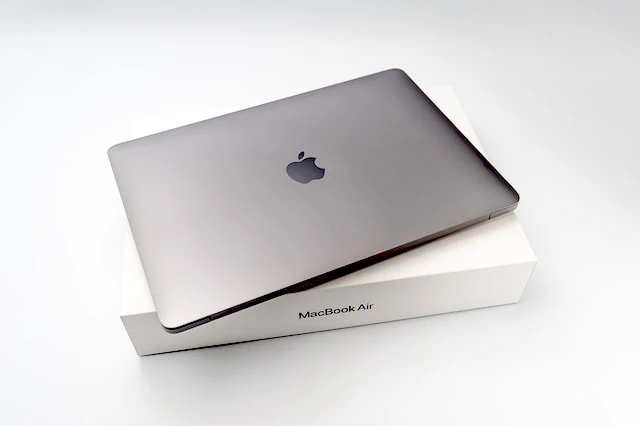
If you’re a contractor or anyone else who’s responsible for procuring their own work computer, or if you’re a college-bound student, it makes sense to spring for a newer model with a bit more horsepower than the bargain-basement models.
Most colleges require students to use a computer. So the question isn’t so much whether you should get one, but how much computer you need. (As a for-instance, take a look at this Rutgers page that outlines the technical specifications for recommended computers—both PCs and Macs.) A good rule of thumb: Try to buy a new laptop or desktop with at least equal if not better specs than what the school recommends.
You want to buy something a little more powerful than the minimum because 1.) better performance simply makes it easier to do your studies and 2.) your studies might eventually require you to use programs that run better on faster computers. And you want to avoid secondhand computers, even those with the technical specs you require, because while cheaper, they could suffer from other mechanical problems or wear and tear you’re simply not aware of yet.
Similar guidance goes for workers whose computers are core to what they do. Why saddle yourself with a machine that coughs and wheezes when you have more than three browser tabs open at once? Or why buy a laptop that already has insufficient storage and struggles to hold a charge? Slow and/or faltering computers drag your efficiency lower and also cause frustration on the job.
Related: Best Investing Apps for Teens Under 18 [Stock Apps]
7. Cars

When it comes to big-ticket items, cars are about as big as they get. Depending on where you live, you might not need a car. But, if you do need one, it’s certainly worth spending more than the bare minimum.
Most people don’t have a lot of flexibility when it comes to their car budget because the cost is so high in the first place. But if you have the benefit of time to save up more before you purchase a car, you can stave off and even prevent some problems over time.
When you buy a car, you ideally should try to buy new (so, no mileage) or lightly pre-owned (with low mileage).
New and even lightly pre-owned cars have very few maintenance and repair costs up front, and they typically enjoy some level of warranty coverage—so even if something does break, you might not be financially liable for the fix. Conversely, heavily used cars tend to need much more maintenance and are more prone to requiring repairs as old parts age out. And those costs aren’t cheap—depending on your luck, what you save in monthly payments, you could easily lose out to having to make major repairs in a given year.
Plus, whenever your car breaks, you’re losing time. You’re losing a means of getting to your job. And if it breaks down in an opportune place—the middle of an intersection or on a busy highway—it’s even presenting a safety hazard to you and everyone around you.
So if you have the option to wait to save up for a lightly used or new car, rather than buy an old clunker, do it. (But note: You don’t have to buy luxury cars to get reliability—check out J.D. Power, Consumer Reports, and other respected car-information outlets to determine what regular brands last the longest.)
Related: The 7 Best Dividend ETFs [Get Income + Diversify]
8. Car Tires
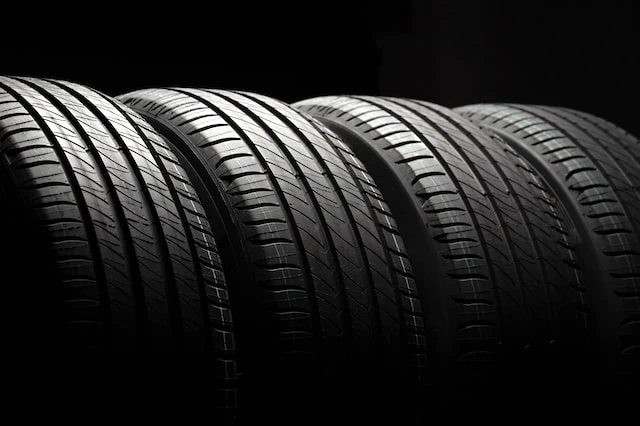
If you need a fresh set of car tires, don’t cheap out, and don’t delay.
To start, having run-down tires is a safety issue; they don’t grip the road as well, and they’re more susceptible to punctures. They can also slowly eat at your wallet—older tires are more likely to suffer from low pressure, which negatively impacts fuel efficiency.
So if you buy used car tires, you’re just inviting those problems sooner.
If you’re budgeting, you’ll need anywhere between $120-$200 per tire for a mid-range new tire (depending on the size tire your vehicle requires). If you’re simply replacing a relatively new blown-out tire, you might be able to get away with buying one tire at a time. Otherwise, if you’re just replacing worn tires, you’ll typically want to buy all four at once—particularly if you drive an all-wheel-drive vehicle.
Related: Best Vanguard Retirement Funds for a 401(k) Plan
9. Dishwasher
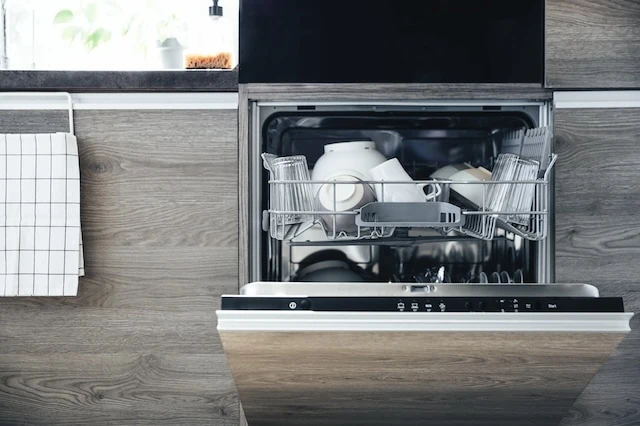
A dishwasher is a big-ticket purchase where people often consider the upfront cost but forget about the cost over time.
Especially if you hate washing dishes manually, it pays to pay up for a nicer dishwasher. For one, some pricier dishwashers offer much better energy- and water-efficiency, helping you save twofold on your utility bills. Also, pricier dishwashers also tend to hold more dishes, clean more deeply, and run more quietly.
Even some seemingly frivolous bells and whistles are quite useful. Some high-end models, for instance, even have sensors that detect how dirty your dishes are and adjust temperatures and cycle times accordingly.
Related: Best Accounting Software for Rental Properties [Free + Paid]
10. Houses

Most of us have seen at least one episode of a show where people buy and “flip” homes, either for a profit or to transform an old home into something incredible for its new owners.
The transformation in these shows, while impressive, take a substantial amount of time … and money.
If you’re buying a new home, you don’t need to pony up for a brand-new mansion, but unless you’re both extremely handy and flush with time, don’t save money buying a “fixer-upper.” In fact, the less handy you are, the newer the house you should buy—yes, you might have to figure out how to do a few DIY tasks eventually, but a new/newer home, with new/newer amenities, will buy you more time to learn. Also worth noting is some issues are so large, you might need alternate housing until they’re fixed—meaning you’ll not only have to make mortgage payments, but you’ll have to pay rent elsewhere.
Also, if you’re not considering buying a new home, even long-term, you might want to reconsider. While expensive overall, owning a home is sometimes actually cheaper than renting. When you own, you have more power, too—there’s no landlord raising rent every year, telling you how you can or can’t decorate the interior, or charging you extra just to own a pet.
Home ownership can also be good for your credit, it offers tax advantages to offset costs, and it can make you feel more personally secure. And remember: A house is a tangible asset—one that can appreciate over time. A 2021 Realtor.com survey shows a whopping 94% of respondents expected to sell their home for more than they paid for it.
Related: 7 Best Fidelity ETFs for 2024 [Invest Tactically]
11. Home Renovations

Even simple renovations can be costly—Rocket Mortgage, for instance, says the average American family spends $22,000 on a single home renovation project. (Though obviously, costs will vary widely from one project to the next.)
In general, it’s a good rule of thumb to not contract out home renovations solely on cost—while cheaper materials and labor might bring the cost to a more attractive level, you risk a lower-quality result that doesn’t stand the test of time. DIY home renovations might be more affordable, but if you’re not skilled, your changes could look sloppy or even be unsafe. So be realistic about what you can do and what you should farm out to a professional.
You might also consider splashing cash on “strategic” renovations—that is, investing money in your home now can add value to it when it comes time to sell. According to Better Homes & Gardens, some of the home renovations that add the most value include:
— Additions that increase your square footage
— Kitchen remodels
— Bathroom renovations
— Updating your heating, ventilation, and air conditioning (HVAC)
— Outdoor updates, such as patios
— Accessibility features
— Updating light fixtures
Related: How to Open a Rent Escrow Account for Renters [And Why]
12. Post-Secondary Education

A post-secondary education is one of the costliest big-ticket items you’ll ever buy—at this point, it’ll likely be second only to your home. But it can be well worth it.
Whether your child goes to college or a trade school, any sort of post-secondary education can make it easier to get a high-paying job.
Whether your child goes to college or a trade school, it can make it easier to get a high-paying job. According to the Bureau of Labor Statistics, the median annual salary for someone with a high school degree is $44,356—that jumps to $74,464 for those with a bachelor’s degree, $86,372 for those with a master’s, and $108,316 for those with a doctoral degree.
Apprenticeship USA, meanwhile, says people who have completed an apprenticeship earn a starting salary of $80,000, on average. (While not apples to apples—BLS data is median, while Apprenticeship USA is using mean—that’s still several tens of thousands of dollars higher, according to numerous other data sources we checked that provide mean earnings estimates for high school diploma holders.)
YATI Tip: You can save for your child’s future education in a tax-advantaged account, such as a 529 savings plan, Coverdell education savings account (ESA), or Roth IRA.
Related: Federal Tax Brackets and Rates
13. Fitness Equipment
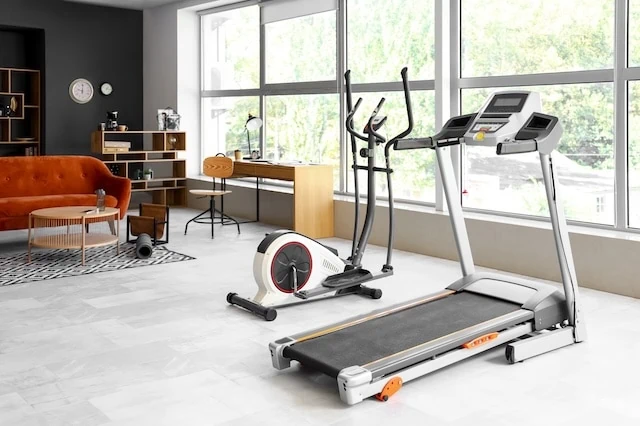
Your health is important, and doing sufficient physical activity is a crucial part of maintaining health. However, while some people can easily maintain a rigorous physical training regimen without spending a dime, others need fitness equipment to make exercising more convenient and even accessible.
For instance, sure, anyone can just go outside and run. However, if your winters are frigid or your summers are dangerously hot, that’s going to keep you indoors—alternatively, you can use a treadmill or stationary bike all year long. Sure, many gyms are cheap. But if you have to drive 30 minutes each way to get to one, maybe you just don’t have the time to lift weights in one—alternatively, you can easily squeeze in some reps in between tasks at home.
In some cases, simply spending the money on fitness equipment is its own motivation. After all, you don’t want to waste the hard-earned money you spent. And as countless studies show, exercise provides a vast array of physical and mental health benefits that far outweigh the outlay for a Stairmaster or rowing machine.
Related: The 7 Best Vanguard ETFs for 2024 [Build a Low-Cost Portfolio]
14. Vacuums
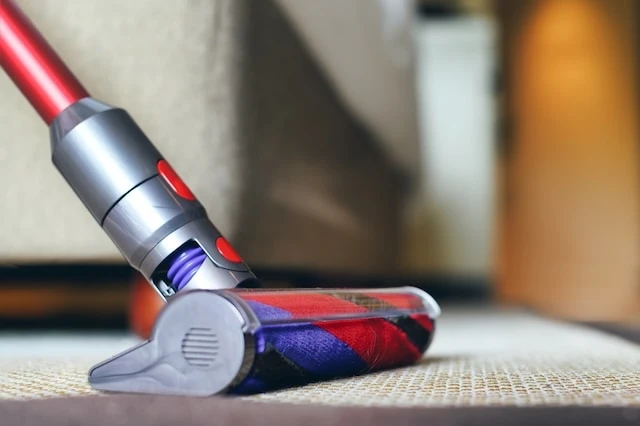
A vacuum is a staple of home cleanliness. But the prices and quality of vacuums can vary substantially.
I remember the tiny, pink vacuum I got for my college dorm. It was cheap, but it ultimately felt (and cleaned) more like a child’s toy than an adult’s home maintenance machine. Yes, you can get vacuums for as cheap as $50 … but cheap vacuums notoriously lack durability, dying without any identifiable cost. They also have little suction, which means you’re not really cleaning anything—you’re just pushing a stick across your carpet.
A good vacuum is going to be a bigger-ticket item in the hundreds of dollars. But they’ll last years longer than a bargain-basement vacuum will, they’ll clean effectively, and they’ll usually come with (or at least support) tools that let you clean in hard-to-reach places.
Nowadays, I try to use vacuums that have much more power and durability. Cheap vacuums have a way of dying without any identifiable cause. Then, you have to purchase another one.
Related: The 7 Best Fidelity Index Funds for Beginners
15. Travel

When you splurge on travel, you won’t save more money in the long run, or get a more durable product, or enjoy any of the other benefits that typically come with spending more on big-ticket items.
The benefits of spending more on travel are far less tangible but no less important.
A survey by the American Society of Travel Advisors showed that 78% of survey takers believed “Now, more than ever, a vacation would do wonders for my mental health.” Another 64% agreed that “Traveling is the best quality time I can spend with my family.” No wonder, then, that nearly half of respondents rank vacationing as their No. 1 discretionary spend.
Speaking for myself, I’ve been to 14 countries—and that’s allowed me to unwind, stay warm when it was icy back home, and, most importantly, learn about numerous other cultures.
How you get more enjoyment out of your trip depends on what you value. Spending more on a flight could get you fewer stops and a shorter flight time (and thus more time at your destination) or just more legroom and a more relaxed time spent getting from A to B. Or you might spend more on a hotel to ensure you’re staying in a more relaxing room in a quieter property. (Whenever I used to stay in hostels, I wouldn’t get a good night’s sleep.) And spending more on experiences—museums, shows, what have you—can turn into even more memories.
Related: How Are Social Security Benefits Taxed?
16. Luggage

You’re at the airport’s baggage claim, and you see your luggage turn the corner … only to see it has split open and released some of your clothes. Or you’re at home zipping your luggage shut before a big trip, but it refuses to budge—and you have a wide-open piece of luggage that’s no good to anyone.
When you buy cheap luggage, you’re increasing the risk that your luggage will become unusable at a critical moment in your travel timeline.
So don’t buy cheap luggage.
Good, solid luggage from established brands such as Samsonite or Hartmann will run you a few hundred dollars per bag. But these bags can last for literal decades—and from time to time, you can get them at stores like Marshalls or TJ Maxx at a discount.
Related: The 7 Best Vanguard Index Funds for Beginners
17. Time-Saving Services
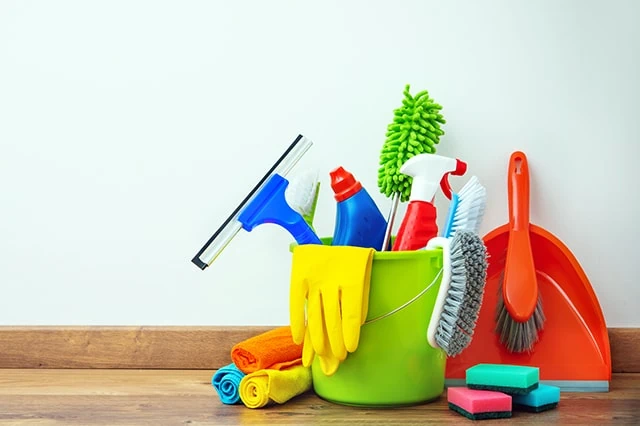
Kyle Woodley, Young and the Invested editor-in-chief, sounding off again. While it might seem silly to pay someone else for a task you could do yourself, professionals can usually do that task better and faster.
Consider one of the most popular time-saving services: cleaning.
My wife and I have both deep-cleaned our house ourselves, and also hired out the job. Typically, it takes the two of us a combined 10 to 12 hours. It took a two-person professional team (that also had the benefit of professional-grade equipment) a combined six hours to do the job—and, admittedly, do it better.
The job cost about $400 (without tip). If you have a traditional 9-to-5, salaried job, and that’s it, then you’re basically paying for the convenience of not having to do it yourself—and that alone can certainly be worth it! However, there’s additional financial incentive if you work an hourly job (especially where overtime hours are common), or if you have at least one side hustle (guilty). That’s because time literally is money; those hours spent working instead of cleaning can help partially or completely offset the money you’re paying to have work such as cleaning or mowing done.
Related: 8 Best Rent Collection Apps & Software for Landlords
18. Kitchen Ranges
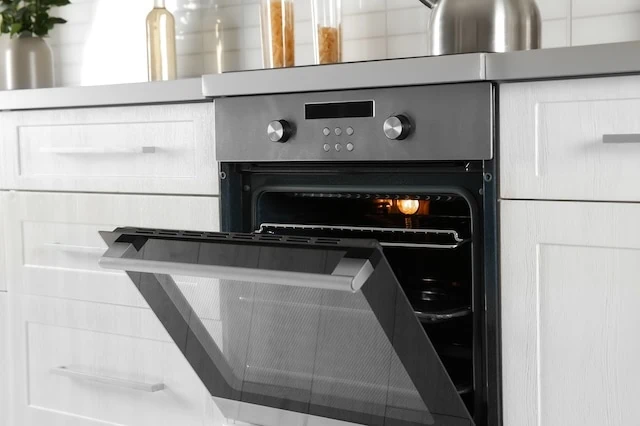
If it’s time to replace your old kitchen range, don’t scrimp.
The kitchen range (which includes an oven and a stove top) is effectively the nerve center of your kitchen. With the exception of occasionally using an outdoor grill, microwave, or crock pot, it’s where most of your cooking is done—and if you have the right kitchen implements, a range can do most of what those other appliances can do, too.
Will paying up for at least a mid-level kitchen range turn you into a Michelin chef? No. But it will cook your food faster and more evenly. Having additional burners makes it easier to cook complex dishes and meals. Double-oven ranges allow you to bake multiple dishes at different temperatures. A kitchen range with a griddle gives you additional cooktop versatility (and a big cooking surface).
Even if you don’t cook often, an impressive kitchen range can literally increase your home’s value for when you’re ready to sell.
Related: 13 Dividend Kings for Royally Resilient Income
19. Water Heaters
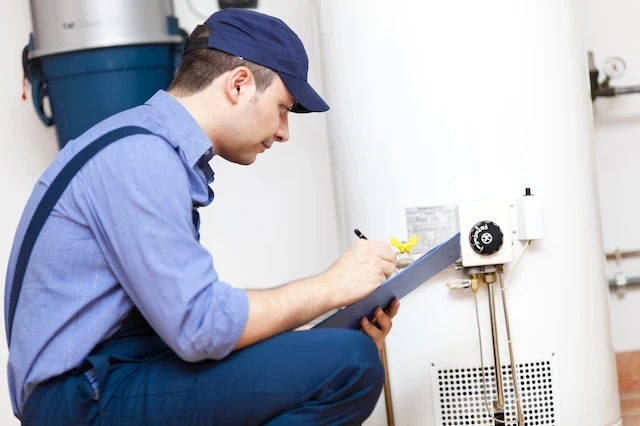
When you buy a home, you always need to be mindful of the ticking time bomb that is your water heater. According to Architectural Digest, “the national average for tank water heater installation is between $906 and $1,583 for the unit and labor, and tankless water heaters cost around $1,833 to $3,910 to purchase and install.”
Larger units cost more—but if you install a tank that’s too small for your family, you risk running out of hot water before everyone bathes. Electric water heaters typically have lower purchase prices but higher operating costs. Gas water heaters have lower operating costs … but they also tend to have shorter lifespans. Tankless water heaters are more expensive but can last between 20 and 30 years.
So there are a lot of considerations when it comes to water heaters. But no matter what kind you get, you don’t want to cheap out. “Value-priced” water heaters often use less durable materials such as plastic valves and glass (or even no) interior tank lining. So while it might be less costly up front, a cheap water heater could still cost more by deteriorating more quickly and forcing you to buy a new one sooner.
Related: 8 Best Online Rent Payment Systems [Rent Collection Services]
20. Cookware
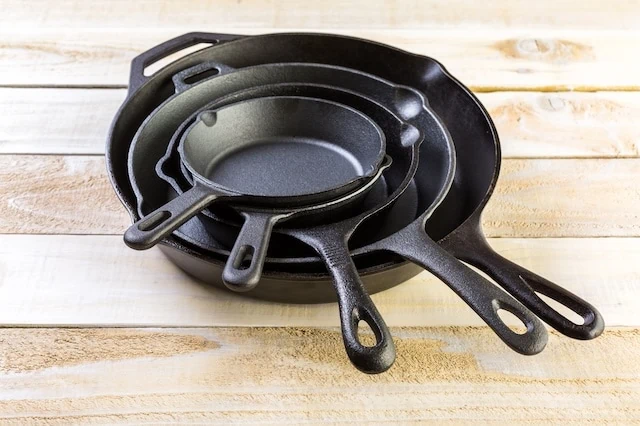
Cookware like pots and pans aren’t necessarily luxury items, but they can be priced that way.
While a single pot or pan wouldn’t necessarily be considered a big-ticket item, a full set will easily set you back hundreds of dollars—even if you “go cheap.” A relatively inexpensive set of nonstick pots and pans can run $300—and those will still need to be replaced every five years, or even more frequently depending on the brand.
Stainless steel cookware, while more expensive, can last decades (if not your whole life). Cast iron cookware can—and often is—passed down through generations.
There’s a reason expensive cookware is a popular item on wedding registries and holiday season wish lists.
Related: 7 Best Banks for Real Estate Investors + Landlords
Bonus: Washing Machine
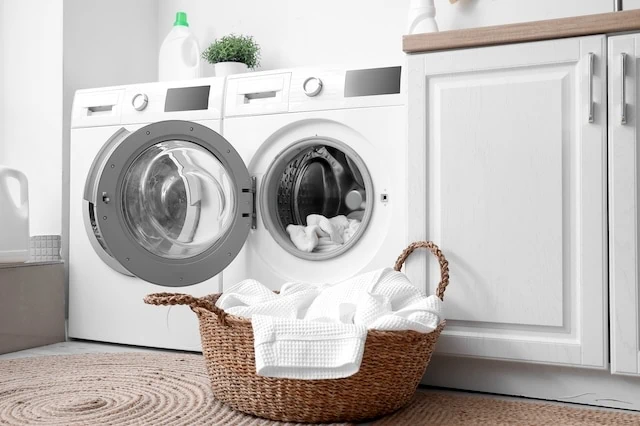
Washing machines are big-ticket items, but doing laundry at home versus at a laundromat can be worth it. While each load of laundry is generally cheaper when done at home, it’s a small difference, so it can take a long time before the investment pays for itself.
However, that isn’t the only factor at play. Unless you live within walking distance from a laundromat and don’t mind lugging around a big basket, or a nearby service offers pickup and drop off, you need to pay for transportation. Plus, if you use a laundromat washing machine, you’re stuck paying for the dryer. Doing laundry at home gives you the option to dry clothes for free on a clothing line, should you wish.
While a washing machine presents a big upfront cost, saving literally hours every week, and coming out ahead financially over time, makes this a big-ticket item worth prioritizing.
Related: 9 Monthly Dividend Stocks for Frequent, Regular Income
How to Plan for a Big Purchase

I’m not suggesting you grab a credit card and head to the nearest store to immediately buy some of these big-ticket items. If you’re going to splurge on services and high-quality goods, you’ll do so over time as your financial situation allows.
But until then, keep these strategies in mind:
Incorporate big-ticket items into your budget: A popular piece of advice (at least back in the day) was “when you buy a car, start saving for your next car.” Maybe you’re not that proactive, but if you know you’re going to need a new car, dishwasher, hot-water heater, etc., it’s wise to start regularly saving toward that so you have the money by the time (or before) you need it. That way, you’re not in a mad scramble to find a few hundred or thousand bucks when the need arises.
Put money in a different account: It’s challenging to “earmark” money from your checking account and not spend it elsewhere. And if you do that, that money is probably earning little to no interest. Set aside money you’re saving toward a big-ticket purchase into an interest-bearing account, such as a high-yield savings account or money market account.
Comparison shop: When I say comparison shop, I don’t just mean on Amazon. Big-ticket purchases shouldn’t be bought on a whim. Take real time to research the product or service that makes the most sense for your family and gives you the most value for what you’re spending. That could mean checking numerous sites, reading numerous reviews, even going out in person to various stores or dealers to see the product in person. (And keep track of prices over time—it’s a great way to determine whether you’re getting a good deal.)
Related: How to Get Free Money Now [15 Ways to Earn Money]
What NOT to Splurge On

If you have a high income, can easily afford luxury goods, and don’t really care how much you spend on anything … for one, congratulations, and two, you don’t need to read on.
But if you’re being smart about your spending, it’s not just about knowing where to pay more—it’s about knowing where to pay less. With that in mind, consider skipping paying too much for the following purchases:
Refrigerators: While getting the absolute cheapest fridge may not be the best option, premium refrigerators are often advised against. Big-ticket fridges typically come with a wide range of technological features, such as Wi-Fi connectivity or voice controls. But the more features added, the more potential for something to go wrong. Often, simpler is better.
Anything “trendy”: Go ahead and buy a nice suit or a classic little black dress. But be more wary of a designer outfit or accessory that might soon go out of style. One of the current fashion trends is “mob wife,” but by the time you read this, it might not be! Also, clothes aren’t the only items that go through trend cycles. Anyone remember Snapchat Spectacles? 3D televisions? Before you buy the latest technology, you might want to wait for it to go mainstream—if it doesn’t, you could be saddled with a high-cost piece of hardware with little developer support and no app ecosystem.
New hobbies: Some hobbies are very expensive. If you can afford one of these hobbies and it enriches your life, by all means, spend a lot of money on it! But if you’re just trying a hobby out, start out cheap. For instance: You don’t want to purchase high-quality camping gear and discover that, after one night on the cold, hard ground, it isn’t for you. Expensive camping gear rapidly goes down in value. Instead, when you’re first getting into a new hobby, try to borrow items or buy affordable tools. Only once it’s clear that you’ve discovered a true passion should you upgrade.
Related: 7 Best Wealth + Net Worth Tracker Apps [View All Your Assets]
Please Don’t Forget to Like, Follow and Comment

Did you find this article helpful? We’d love to hear your thoughts! Leave a comment with the box on the left-hand side of the screen and share your thoughts.
Also, do you want to stay up-to-date on our latest content?
1. Follow us by clicking the [+ Follow] button above,
2. Subscribe to The Weekend Tea, our weekly newsletter to read more about investing, spending, taxes, and more, and
3. Give the article a Thumbs Up on the top-left side of the screen.
4. And lastly, if you think this information would benefit your friends and family, don’t hesitate to share it with them!





